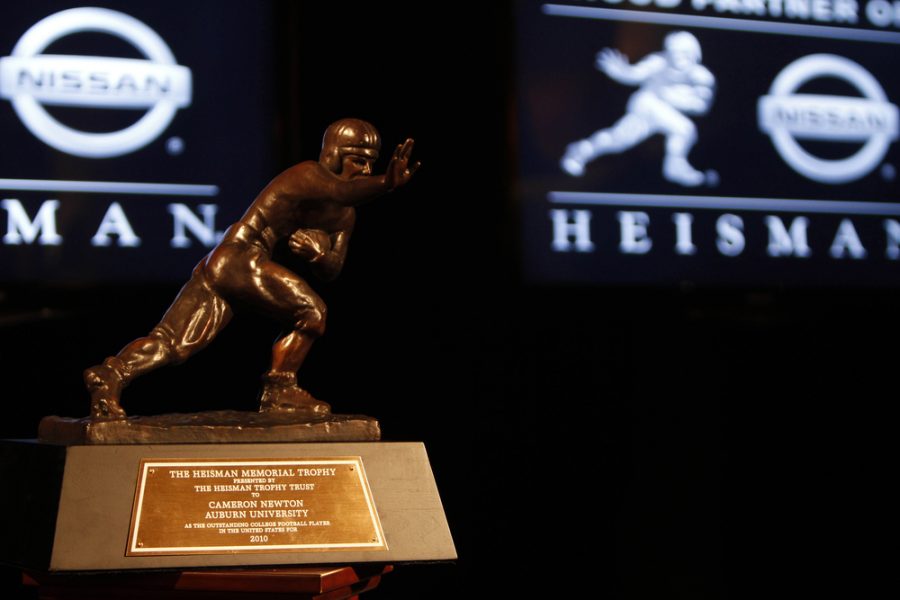The Heisman is False Hype
Published: September 29, 2017
Week 4 of college football is well underway which means the Heisman watch is up and running. Which would be very exciting if the award meant anything at all.
The Heisman trophy, originally named the DAC award, originated from the the New York Downtown Athletic Club and was first presented to an individual in 1935. At the time, the DAC trophy was awarded to “the outstanding college football player whose performance best exhibited the pursuit of excellence with integrity. Winners are to epitomize great ability combined with diligence, perseverance, and hard work.” But this is no longer what the Heisman represents.
Now to win this falsely coveted award you must meet an extended list of requirements. But the kicker is that these requirements are not stated in the rules, requirements or regulations. The award has shaped itself into something that it was never meant to be.
To even appear on the Heisman Watch in 2017 you must:
1. Attend a NCAA D1 school.
Since 1936, ALL collegiate football players have been eligible to win the award, yet the trophy somehow always ends up in the hands of a NCAA D1 player. There are 128 D1 collegiate teams who each hold an average of 55 players, which gives a pool of about 7040 candidates.
2. Play for one of the traditional powers in college football.
It can be agreed upon that there are about 12 traditional powers (NCAA DI I-A) who hold both the talent and the fan-base to produce Heisman winners. This cuts the schools from 128 to 12 bringing the candidate count to about 660.
3. Be a quarterback or a running back
Only four athletes not playing either of these positions (two tight ends and two wide receivers) have ever been awarded the Heisman in all of the trophy’s history. This frankly makes no sense. The entire point of the trophy is to award a college football player not a collegiate quarterback or running back. Yes, theoretically, these Heisman traits could have happened to be best represented by these positions, but statistically it just doesn’t quite add up. Averaging out a generous 8 scholarships for these positions per team brings the count to 96.
4. Get screen time
Heisman votes come from sports journalists, previous winners, and sponsors, therefore you have to be in the public eye of the voters for them to even know your name on the ballot. After factoring in the first and second string play time dilemma that cuts the pool down to a solid 48.
So, essentially only .68% of the entire league is eligible to receive the award.
On top of this obvious lack of possible recipients, there are some other major issues with the award. For example, the voting timeline. Voting polls open extremely early, which means votes come in extremely early, often before conference championship play has even begun. This means the last 3 games of an athlete’s career and easily the most important games of the whole season count for virtually nothing. Additionally, O.J. Simpson has a vote, which is a major red flag to say the least.
Even through all of these issues the Heisman is still arguably one of the most coveted awards in sports. But, if your favorite player doesn’t win, don’t take it personally; it’s more of a compliment anyway.





![FHN Holds Annual Senior Night On Home Turf [Photo Gallery]](https://FHNtoday.com/wp-content/uploads/2024/10/IMG_0837-300x169.jpg)

![Day Three of Basketball Tryouts [Photo Gallery]](https://FHNtoday.com/wp-content/uploads/2024/11/Basketball-tryouts-PJaques-11.6-03-300x200.jpg)




